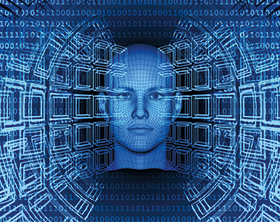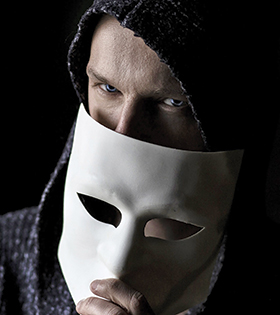

As part of our ongoing practical and localised research to compare our preferred vendors’ products against other competing products, Fulcrum Biometrics Southern Africa has imported a number of devices for facial recognition and temperature scanning from different vendors. The bottom line is, beware and dig deeper.
There is a wide range of choices on the market for different biometric recognition methods or ‘modalities’. These vary greatly in the three key things that end users should have a good understanding of: price, accuracy, and user experience or convenience. Yes, there are biometric fits for varying purposes and it is vital you understand the needs of your application, especially factors such as accuracy when time-and-attendance (T&A) clocking has financial implications.
Firstly, while vendors seem to somewhat ‘personalise’ results to suit their particular product, a little research on the Web will reveal that it is widely accepted that face recognition, whilst fast improving, remains the least accurate of the popular modalities – and that’s before you wear a mask or grow a beard.
What you may not know however is that while face recognition is the most un-intrusive, it can be less accurate than the others, to the extent that it may present significant risk and render itself unsuitable for certain applications. Remember that false rejection may just be an inconvenience to the user, but false acceptance is potentially a severe security event.
Southern African outcome
Our research has brought us to the conclusion that substandard equipment was rushed onto the market to take advantage of the COVID-19 pandemic. Pressurised decisions may have been made as a consequence, resulting in some customers having invested unwisely and assuming any device would be fit for their purposes.
Are face recognition algorithms improving?
The global authority on face algorithms in the USA, the National Institute of Standards and Technology (NIST), has released several reports on facial recognition systems and the effect of masks. Whilst these indicate that massive gains in accuracy have been made in recent years with as much as a 20-times improvement, they also show that even the best face algorithms may reduce accuracy by 50% when wearing a mask, and again, beards are another story. Please note that these test results are related to pre COVID-19 algorithms. [A release from National Institute of Standards and Technology (NIST) on 1 December 2020 about face recognition with masks, however, noted “some software developers have made demonstrable progress at recognising masked faces” – see more at https://www.nist.gov/news-events/news/2020/12/face-recognition-software-shows-improvement-recognizing-masked-faces, or use the short link: www.securitysa.com/*nist1 – Ed.]

What effect do masks have on accuracy?
A NIST test inspired by the COVID-19 pandemic and the widespread requirement that people wear protective face masks in public places has driven a need to understand how cooperative face recognition technology deals with occluded faces, often with just the periocular area and above visible.
Without masks, the top-performing algorithms usually have error rates of about 0,3%. Nevertheless, when even the most accurate algorithms were confronted with the highest-coverage masks, error rates jumped to about 5%, researchers found.
Some algorithms that are quite competitive with unmasked faces actually fail to authenticate between 20% and 50% of images with masks. “This is noteworthy, given that around 70% of the face area is occluded by the mask,” the report reads. (It should be noted that several vendors have since released ‘mask ready’ algorithms that ‘improve’ performance).
We at Fulcrum SA have experienced these results in the field and, trust us, if you wear a motorcycle bandana or ‘buff’ covering, it will not recognise you at all. Multi-colour masks also have a significant effect on the accuracy.
It is important, however, to recognise that there is a stark difference between the best and worst algorithms, many of the latter having arrived with low-cost terminals into this country. In comparison to the false negative rates under 1% for black females and white males among the highest-performing algorithms, the lowest-performing algorithms had false negatives rates, for blacks and whites, as high as 99%.
It is not feasible from a cost standpoint to have government-grade face algorithms in all facial recognition access control devices. There are devices that strike a good balance between price and performance by utilising top tier algorithms designed for purpose, while keeping costs to a minimum.
Fulcrum in SA uses only the best algorithms in our solutions so you can be assured that performance and accuracy are paramount (see https://www.rankone.io/).
In terms of demographic performance, an algorithm should exhibit minimal impact due to race or gender – a critical factor in Africa is to have higher accuracy scores for dark faces because most algorithms work better with light ones and Rank One excels here.
Temperature measurement is another aspect that warrants comment. Cheap ‘skin surface temperature’ sensors can be highly inaccurate and affected by wind, sunlight and other localised ambient factors. For concerned users, only quality infrared sensors should be used, such as the leading FLIR Lepton enhanced IR micro-sensor that is used in our devices. It is fully contactless and operates at the same stand-off distance as the device itself (see https://www.flir.eu/).
Should I be using a multimodal terminal?
Multimodal biometrics technology has recently gained interest due to its capacity to overcome certain inherent limitations of single biometric modalities and to improve the overall recognition rate performance, whilst retaining convenience and a quality user experience.
The highly accurate iris modality is considered one of the most reliable biometric characteristics; it remains unchanged throughout the adult human life and is much less likely to suffer from accidental damage than palms or fingers. Used in combination with the face modality, which is still the most natural, fast and unobtrusive way to recognise a person, it creates a balance between usability and accuracy. Our devices use a specialised technique of fast face matching with the Rank One algorithm, resorting to iris only if a facial mismatch or low-threshold match occurs. Iris recognition is not affected by the wearing of any type of mask, beards, makeup or facial tattoos.
Simplifying integration
For those seeking to seamlessly integrate into their back-end systems, our Fulcrum Biometric Framework (FbF) and a comprehensive SDK provide you with a complete turnkey access control and time-and-attendance solution for your business. Built upon more than 15 years of experience enabling biometric solutions, FbF is a suite of tools that simplify the inclusion of biometrics into any new or existing mobile, desktop, or web-based application. With FbF tools, you have everything you need to biometrically link a physical person to their records in your database or application. By choosing to work with the FbF tools instead of low-level SDKs, your time can be spent focused on perfecting your application or solution’s features, rather than becoming an expert in implementing biometrics
This article is a shortened version of the full paper by Dave Crawshay-Hall, which can be downloaded at www.securitysa.com/*fulcrum1.
| Tel: | +27 10 157 0654 |
| Email: | [email protected] |
| www: | www.fulcrumbiometrics.co.za |
| Articles: | More information and articles about Fulcrum Biometrics |

© Technews Publishing (Pty) Ltd. | All Rights Reserved.